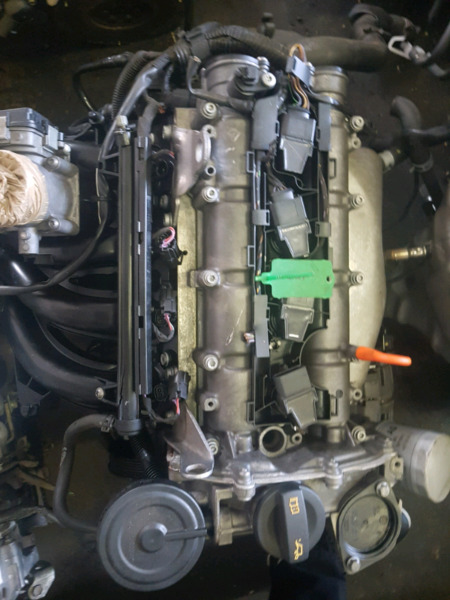Exactly How a Clp Engine Can Enhance Efficiency in Numerous Industries
The advent of CLP engines marks a considerable shift in operational performance throughout different industries, driven by their capability to enhance gas consumption and decrease downtime. As organizations significantly focus on sustainability alongside performance, the duty of CLP engines comes to be even much more essential.
Summary of CLP Engines
CLP engines, or Continual Liquid Propellant engines, represent a substantial improvement in propulsion modern technology, specifically for room applications. These engines make use of a continuous feed system that enables the continual expulsion of propellant, resulting in boosted performance and efficiency compared to traditional solid or hybrid propulsion systems. By maintaining a continuous circulation of liquid propellant, CLP engines can attain extra exact thrust control, which is vital for navigating spacecraft in various mission circumstances.
The style of CLP engines incorporates advanced products and ingenious fuel administration systems. clp engine. This leads to lowered weight and boosted reliability, vital variables for long-duration space missions. In addition, the constant procedure decreases the risk of combustion instability, a common challenge in standard rocket engines.

Advantages in Manufacturing
The production of Continuous Liquid Propellant (CLP) engines offers several noteworthy benefits that boost both performance and cost-effectiveness. Among the primary advantages is the streamlined production process, which lowers the intricacy related to traditional propulsion systems. By utilizing fluid propellant, manufacturers can attain greater accuracy in engine performance, causing optimized power result and decreased waste.
Additionally, CLP engines assist in a greater degree of modularity, enabling for simpler assimilation right into various production lines. This adaptability can considerably reduce lead times and enhance overall operational versatility. Using CLP technology additionally often tends to decrease the need for considerable maintenance as a result of fewer relocating parts, which equates right into lowered downtime and operational prices.

Applications in Logistics
Leveraging Continual Liquid Propellant (CLP) engines in logistics supplies substantial benefits in operational efficiency and integrity. These engines offer a robust service for various transport requirements, enabling the smooth activity of products across vast distances. The inherent style of CLP engines permits for regular power result, which equates right into smoother and extra predictable transportation timetables.
Among the key applications of CLP engines in logistics remains in sturdy products transport, where they can drive both ground and airborne vehicles. Their capacity to keep high performance under varying lots conditions makes sure that distribution timelines are met, consequently improving client fulfillment. Furthermore, CLP engines can be incorporated into automated logistics systems, facilitating real-time monitoring and maximizing course planning.
In addition, the durability of CLP engines minimizes upkeep downtime, permitting logistics firms to optimize their operational capacities. This is especially beneficial in warehousing procedures, where performance in handling and transferring products is important. As logistics remains to advance, the combination of CLP engines represents a forward-thinking approach that not only improves performance however likewise sustains the market's growing demands for integrity and rate.
Influence On Power Efficiency
Exactly you can find out more How do Constant Liquid Propellant (CLP) engines boost energy performance in transportation? CLP engines make use of a regular flow of liquid fuel, enhancing burning procedures and preserving a stable drive outcome. This layout lessens energy losses connected with traditional combustion engines, where fuel shipment can vary and result in inadequacies.
The constant procedure of CLP engines allows for a more effective thermal cycle, causing greater certain impulse compared to traditional engines. clp engine. This equates to minimized gas intake for the same amount of work done, dramatically decreasing functional expenses across different transportation sectors, including air travel and maritime industries
Additionally, the capability of CLP engines to preserve optimum efficiency under varying tons conditions reduces the requirement for regular acceleration and slowdown, further boosting fuel performance. Boosted energy performance not only adds to cost savings yet likewise brings about lower greenhouse gas emissions, lining up with international Recommended Site sustainability goals.
Future Trends and Innovations
Emerging innovations in Constant Fluid Propellant (CLP) engine innovation guarantee to transform the landscape of transport effectiveness and sustainability. As markets pivot toward greener alternatives, CLP engines stand at the forefront, incorporating cutting-edge materials and layout methodologies that enhance efficiency while lessening ecological impact.
Among the most appealing trends is the fostering of crossbreed systems that combine CLP engines with sustainable power sources. This synergy can maximize gas consumption and reduce exhausts, aligning with global sustainability goals. Furthermore, advancements in computational fluid dynamics (CFD) are promoting the design of even more aerodynamically reliable engines, causing decreased drag and improved gas effectiveness.
Additionally, the growth of clever tracking systems is established to improve functional performances. These systems take advantage of information analytics and IoT technology to optimize engine performance in real-time, guaranteeing that the engines run within their most effective criteria.
As study proceeds to explore alternate propellant formulas-- such as biofuels and artificial fuels-- the future of CLP engines looks appealing. By using these innovations, industries can not only boost their efficiency but also contribute considerably to a cleaner, extra lasting future in transportation.
Conclusion
In final thought, CLP engines stand for a substantial innovation in performance throughout several markets. The combination of innovative materials and fewer relocating parts reduces upkeep needs, while positioning with sustainability goals placements CLP engines as a critical technology for the future.